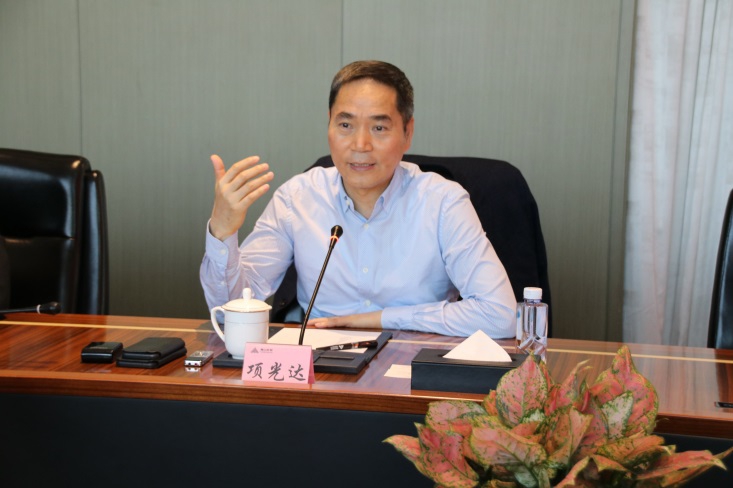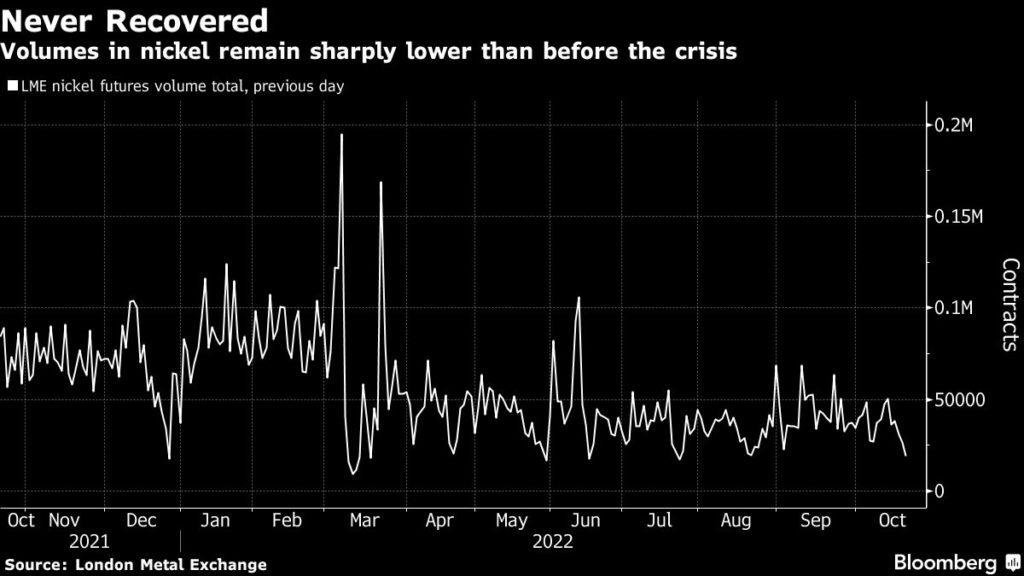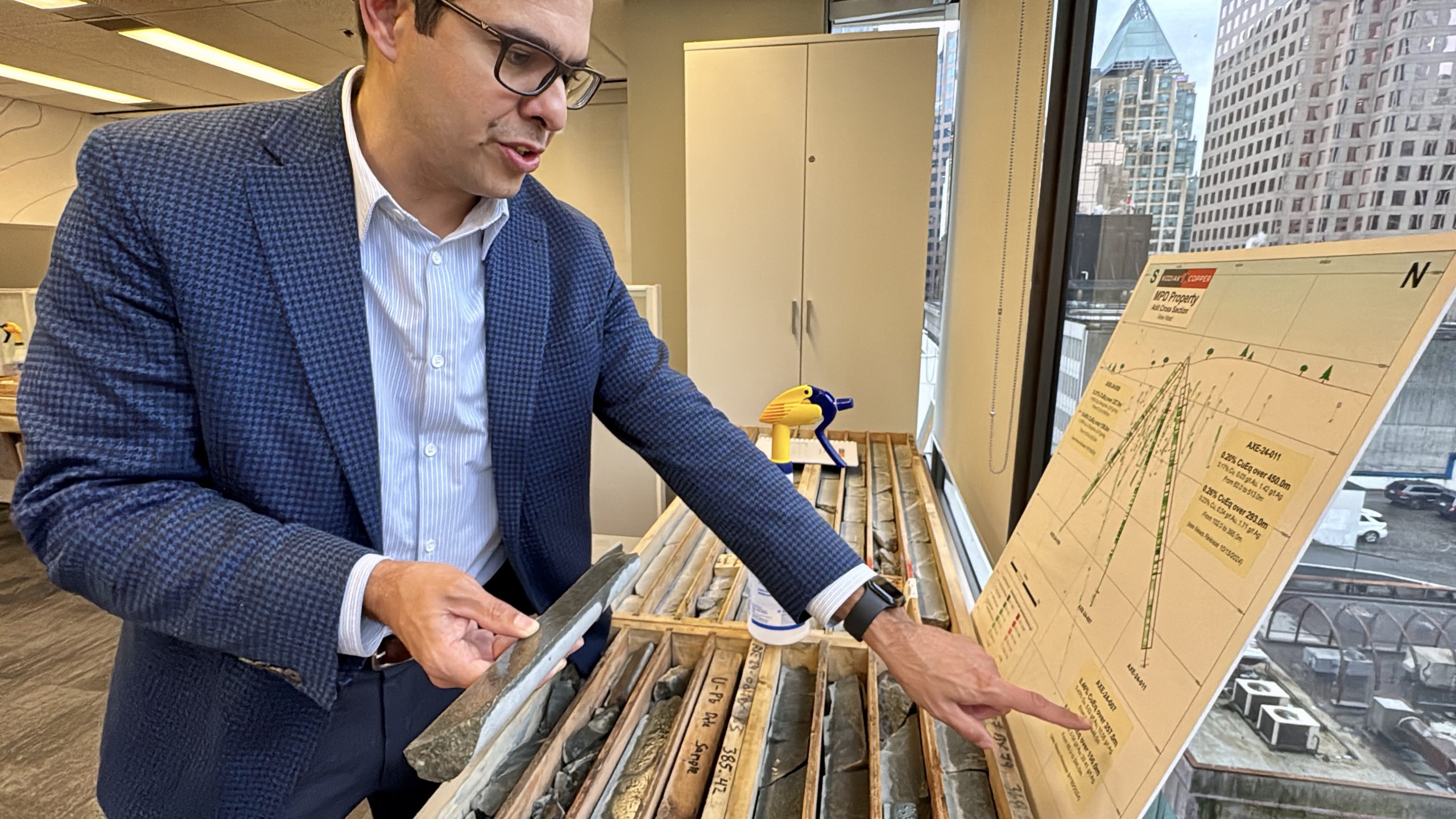Brokers balk as nickel tycoon seeks to add to LME short position

The metals tycoon at the center of this year’s massive nickel squeeze has been seeking to add new short positions for the first time since the crisis, but is struggling to convince brokers to handle the trades.
Xiang Guangda’s Tsingshan Holding Group Co. pared back its nickel short position over the summer to a relatively low level that has remained stable for months. Now, the world’s largest producer of nickel and stainless steel is talking to brokers about starting to increase its position on the London Metal Exchange as a hedge for its own nickel output, according to people familiar with the matter.
Tsingshan isn’t looking to place a bet anywhere near as big as the one that rocked global metals markets in March, said the people, who asked not to be identified discussing private information. Even so, brokers are wary of taking on substantial positions for Tsingshan and some have entirely stopped trading for the company.
While Xiang and Tsingshan are seeking to move beyond the drama of this year’s crisis, the LME and its nickel market remain deeply scarred. The 145-year-old exchange is facing pressure from regulators and lawsuits from hedge funds and traders over its actions during the squeeze, including the decision to cancel billions of dollars in transactions. Nickel trading volumes have yet to recover and the market is still operating with shortened trading hours.
Read more: The 18 minutes of trading chaos that broke the nickel market
As the largest nickel producer, Tsingshan has for years been one of the biggest players in the LME market, placing trades as a hedge against swings in the value of the physical metal it produces, as well as to bet on future price moves. As a result, the company’s inability to resume its active trading has been a major contributing factor to the collapse in trading volumes in the LME nickel contract. It also means that Tsingshan, whose nickel output is still growing at its Indonesian assets, has only been able to hedge on a relatively small and short-term basis.
Attempts to seek comment from Tsingshan were unsuccessful. The LME declined to comment.
Tsingshan held a massive nickel short position of over 150,000 tons in March, when prices spiked 250% in a little over 24 hours, prompting the exchange to halt trading for a week and cancel hours worth of trading at the highest prices. The crisis threatened to bankrupt Tsingshan, brought several brokers to the brink of failure, and the LME has said it posed a systemic risk to the market.
Xiang gradually reduced the short position over the following months following crunch talks with his banks and brokers. By the end of June, Tsingshan had cut the position to less than 20,000 tons, Bloomberg reported at the time, and it has been relatively stable in size since then, the people said.
Read more: Tycoon whose bet broke the nickel market walks away a billionaire
However, in recent weeks Tsingshan has approached brokers seeking to increase its position, in an attempt to resume regularly trading and hedging as it had done before the crisis.
Brokers are reluctant to take on big positions for Tsingshan, and some that were involved in the March crisis — including JPMorgan Chase & Co., which had been its largest counterparty — have entirely stopped trading for the company, the people said. While Tsingshan has been able to maintain positions of a few hundred lots at several of its longstanding counterparts (each lot of nickel is for six tons), it has also been seeking new brokers.
A spokesperson for JPMorgan declined to comment.

Adding to brokers’ reluctance to take on large positions, the LME’s clearinghouse is charging additional “concentration margin” over and above its standard margin levels on nickel positions of more than a few thousand tons. The relatively low threshold for charging concentration margin is a function of the low trading volumes, meaning the market is stuck in a negative feedback loop: Tsingshan’s absence is weighing on trading volumes, while the low volumes make it harder for Tsingshan or any other player to meaningfully boost their activity. What’s more, brokers and banks have largely stopped opening new positions in the over-the-counter market.
The exchange has also yet to resume nickel trading during Asian hours, which was when prices spiked most sharply during the squeeze. Daily trading in nickel has begun at 8 a.m. London time since the market reopened after the week-long suspension in March, while the rest of its metal contracts open at 1 a.m.
The limited hours make it harder to arbitrage between the LME and the Shanghai Futures Exchange, further contributing to the fall in volumes.
(By Jack Farchy and Alfred Cang)
{{ commodity.name }}
{{ post.title }}
{{ post.date }}

Comments